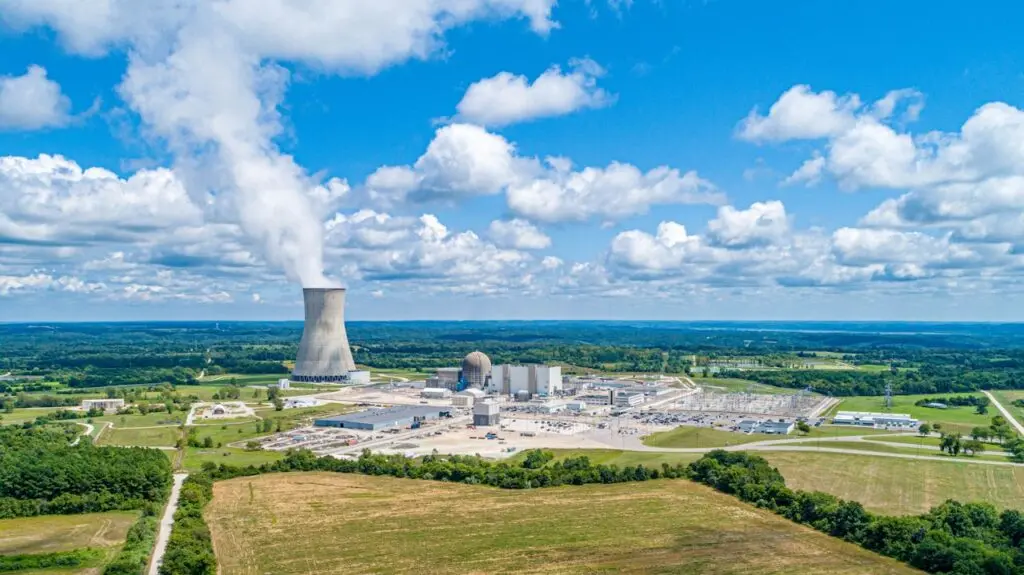Let’s Dig Deeper Into These Canadian Nuclear Stocks
Key takeaways
As the world moves toward a cleaner energy future, nuclear power is gaining recognition for its ability to provide reliable, carbon-free electricity, making it a vital part of the energy transition.
With increasing global investment in nuclear reactors, particularly in Asia and Europe, demand for uranium is expected to grow significantly, benefiting producers like Cameco and Denison Mines.
Companies in the nuclear sector, such as TC Energy and Constellation Energy, offer a mix of stable cash flows from regulated or contracted operations, alongside growth opportunities from technological advancements and expanding nuclear adoption.
3 stocks I like better than the ones on this list.The growth of nuclear energy will be a massive story over the next few decades.
Let’s take a closer look at 5 nuclear energy names, stocks that can help any Canadian investor get exposure to the nuclear energy sector.
What are the best nuclear energy stocks to buy right now?
Diversified energy infrastructure giant
TC Energy (TSE:TRP)

TC Energy owns and operates one of the largest energy infrastructure networks in North America. While its primary focus has historically been natural gas pipelines and liquids transportation, the company is actively investing in nuclear energy projects. Its ownership stake in the Bruce Power nuclear facility, one of the largest nuclear power plants in the world, makes it a unique player in the nuclear energy space.
P/E: 15.3
5 Yr Revenue Growth: 0.1%
5 Yr Earnings Growth: 0.1%
5 Yr Dividend Growth: 3.6%
Yield: 5.2%
U.S. utility with nuclear operations
Dominion Energy (NYSE:D)

Dominion Energy is a major U.S.-based utility with operations spanning electricity and natural gas distribution. It has significant investments in nuclear power generation, including ownership of four nuclear plants that provide clean, reliable baseload power to millions of customers. The company also has a strong focus on renewable energy development as part of its long-term decarbonization goals.
P/E: 19.6
5 Yr Revenue Growth: 0.1%
5 Yr Earnings Growth: 8.5%
5 Yr Dividend Growth: -6.2%
Yield: 5.0%
Uranium exploration and development company
Denison Mines (TSE:DML)

Denison Mines is a Canadian uranium exploration and development company focused on advancing its flagship Wheeler River Project in the Athabasca Basin, one of the world’s most productive uranium regions. The company is well-positioned to benefit from rising uranium demand driven by growing global interest in nuclear energy as a clean power source.
P/E: –
5 Yr Revenue Growth: -23.7%
5 Yr Earnings Growth: –
5 Yr Dividend Growth: –
Yield: –
Leading U.S. nuclear energy producer
Constellation Energy (NASDAQ:CEG)

Constellation Energy operates the largest fleet of nuclear power plants in the U.S., providing clean, carbon-free electricity to millions of homes and businesses. It was spun off from Exelon in 2022 to focus exclusively on nuclear and renewable energy. The company plays a crucial role in providing reliable baseload power and reducing greenhouse gas emissions.
P/E: 18.8
5 Yr Revenue Growth: 4.5%
5 Yr Earnings Growth: 28.1%
5 Yr Dividend Growth: –
Yield: 0.6%
Global leader in uranium mining
Cameco (TSE:CCO)

Cameco is one of the world’s largest uranium producers, supplying fuel for nuclear power plants globally. The company operates major mines in Canada and Kazakhstan and benefits from long-term supply agreements with utility companies. Cameco is also actively involved in the nuclear fuel cycle, including refining and conversion, making it a critical part of the nuclear energy ecosystem.
P/E: 156.4
5 Yr Revenue Growth: 11.0%
5 Yr Earnings Growth: 15.5%
5 Yr Dividend Growth: 14.9%
Yield: 0.3%
The hot debate on nuclear energy
The world is moving away from fossil fuels in a significant way, but there are a few problems with mothballing power plants that burn coal or natural gas.
Greener versions of power — like wind turbines or solar projects — aren’t nearly as environmentally friendly as first advertised, thanks to current manufacturing practices.
Besides, even after a decade of serious investment into renewables, wind and solar power make up just 10.7% of global power generation.
Nuclear energy solves many of these problems. Nuclear plants are long-life assets that can last decades longer than solar or wind farms. Fuel is abundant and is easily transported, thanks to its relatively close proximity to uranium production.
Related
Top Canadian Uranium Stocks

Two significant risks — meltdown and nuclear waste — have significantly improved over time, especially after Fukushima in 2011. It’s still not foolproof, but ask the thousands of folks who live within spitting distance of nuclear plants in Ontario, and they’d agree they feel pretty safe.
Many investors bullish on nuclear power bet on Canadian stocks like uranium miners, convinced that increased adoption of nuclear power will send its primary fuel higher in price.
And if you don’t want the risk of an individual miner, there’s always a uranium ETF. But that isn’t the only way to access this exciting industry, although some have the disadvantage of not being pure-play nuclear stocks.
Much like the growing population is increasing the popularity of many top fertilizer stocks here in Canada, the push to greener forms of energy is increasing the popularity of some nuclear energy options.

